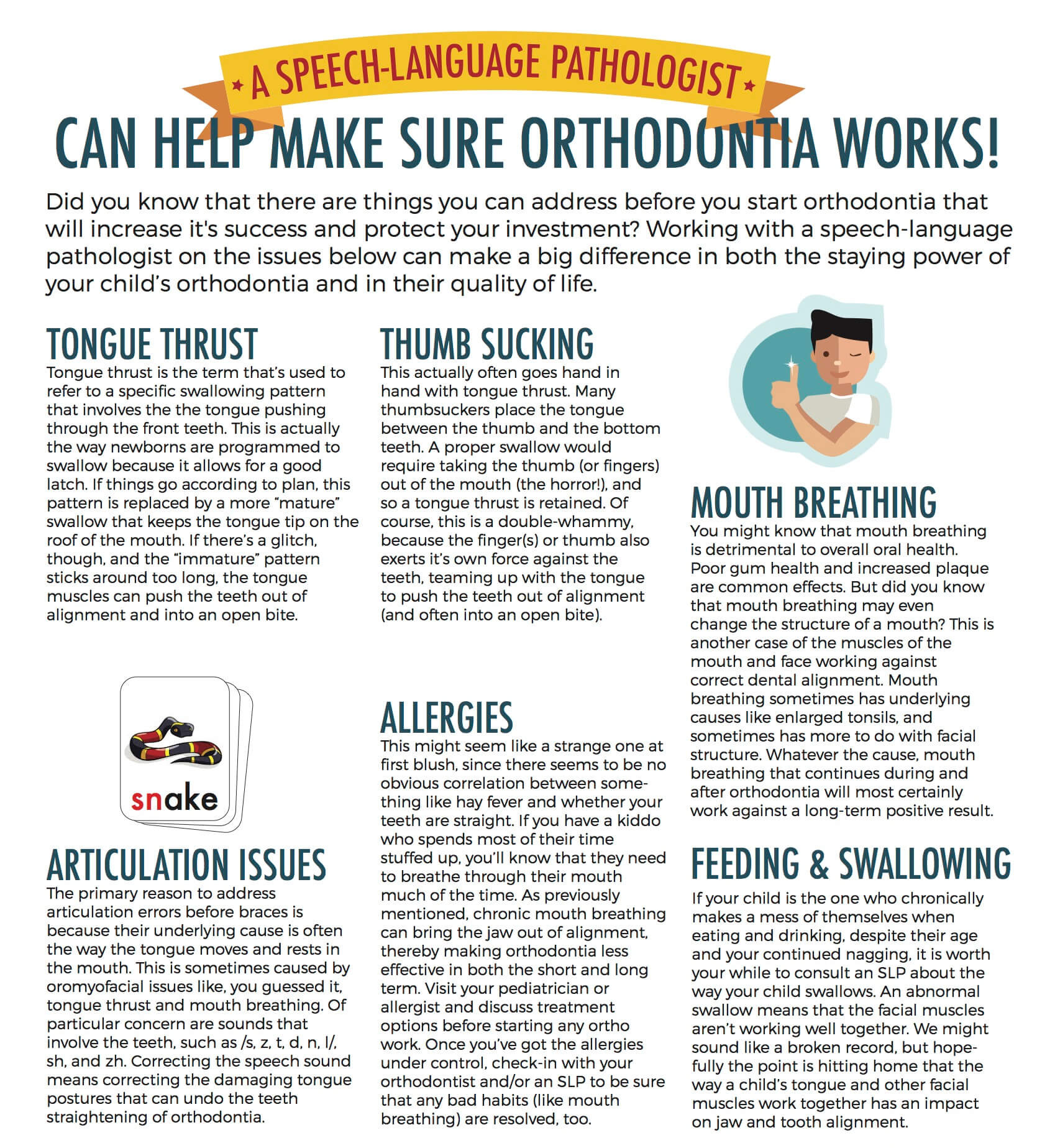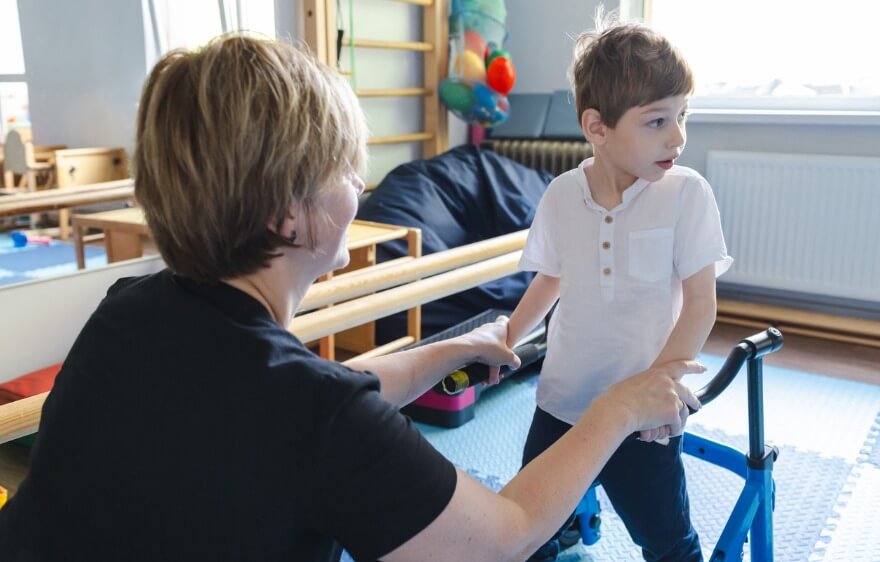Here’s the scenario: you take your sweet and charming child to visit their beloved pediatric dentist for a regularly scheduled check-up. Dr. Dentist says the usual things, like “Remember that sports drinks are full of hidden sugar,” and “Let’s try a bit harder to remember to floss.” And then she says something that makes the edges of your vision go a little fuzzy . . . “I think I’d like to refer you to my colleague for an orthodontic consultation.” She probably says other things after that, but you don’t remember any of them because your brain is flooded with visions of dollars and metal and cutting corn off the cob and dollars and fishing retainers out of the garbage and over-the-head headgear and dollars.
We all know that orthodontia is great. It has many benefits, ranging from reducing cavities to increasing self-confidence. My eye teeth were growing straight out of my gums for Pete’s sake, so I feel quite sure that it changed my life for the better (even if I didn’t wear my retainer and my teeth have shifted into mild crookedness now). We also know that it can be wicked expensive and that insurance reimbursement is not a guarantee.
But did you know there are things you can address before you start orthodontia that will increase its success and staying power (and protect your investment)? And it just so happens that speech-language pathologists can address many of these things. Well, it’s all true. We came up with our top 6 issues you should tackle before shelling out the cash for braces and such.

6 Things to Address Before Getting Braces
1. Tongue Thrust
Tongue thrust is the term that’s used to refer to a specific swallowing pattern that involves the the tongue pushing through the front teeth. This is actually the way newborns are programmed to swallow because it allows for a good latch. If things go according to plan, this pattern is replaced by a more “mature” swallow that keeps the tongue tip on the roof of the mouth. If there’s a glitch, though, and the “immature” pattern sticks around too long, the tongue muscles can push the teeth out of alignment and into an open bite. Check out this video and you’ll have no trouble seeing how a lingering tongue thrust can completely undo all the work of orthodontia.
2. Thumb Sucking
This often goes hand in hand with tongue thrust. Many thumbsuckers (my former self included) place the tongue between the thumb and the bottom teeth. A proper swallow would require taking the thumb (or fingers) out of the mouth (the horror!), and so a tongue thrust is retained. Of course, this is a double-whammy because the finger(s) or thumb also exerts their own force against the teeth, teaming up with the tongue to push the teeth out of alignment (and often into an open bite). Orthodontia fail.
3. Mouth Breathing
You might know that mouth breathing is detrimental to overall oral health. Poor gum health and increased plaque are common effects. But, I’d wager that you didn’t know that mouth breathing may even change the structure of a mouth. This is another case of the muscles of the mouth and face working against correct dental alignment. Mouth breathing sometimes has underlying causes like enlarged tonsils, and sometimes has more to do with facial structure. Whatever the cause, mouth breathing that continues during and after orthodontia will certainly work against a long-term positive result.
4. Articulation issues
The primary reason to address articulation errors before braces is because the underlying cause of articulation errors is often the way the tongue moves and rests in the mouth. This is sometimes caused by oromyofacial issues like, you guessed it, tongue thrust and mouth breathing. Of particular concern are sounds that involve the teeth, such as /s, z, t, d, n, l/, sh, and zh. Correcting the speech sound means correcting the damaging tongue postures that can undo the teeth straightening of orthodontia.
5. Allergies
This might seem like a strange one at first blush, since there seems to be no obvious correlation between something like hay fever and whether your teeth are straight. And honestly, if it really is just seasonal sniffles when the cottonwoods are blooming, then there’s no need for alarm. However, if you have a kiddo who spends most of their time stuffed up, you’ll know that they need to breathe through their mouths much of the time. As I covered in the previous post, chronic mouth breathing can bring the jaw out of alignment, thereby making orthodontia less effective in both the short and long term. Visit your pediatrician or allergist and discuss treatment options before starting any ortho work. Once you’ve got the allergies under control, check in with your orthodontist and/or an SLP to ensure any bad habits (like mouth breathing) are resolved, too.
6. Feeding and Swallowing Concerns
I am starting to feel like a broken record here, but hopefully the point that the way a child’s tongue and other facial muscles work together has an impact on jaw and tooth alignment is hitting home. If your child is the one who chronically makes a mess of themselves when eating and drinking, despite their age and your continued nagging, it is worth your while to consult an SLP about the way your child swallows. An abnormal swallow means that those facial muscles that I keep bringing up aren’t working well together. As with all of these issues, a little bit of help from an SLP can make a big difference in both the staying power of the orthodontia and your child’s quality of life.
And that’s it! Once you can go down this list and say that none of them are an issue for you or your child, you can hop on the orthodontia train knowing that you have taken important steps to protect your investment in straight and beautiful teeth.
If you are considering orthodontia for your child and the little cherub demonstrates any/all of the above, get in touch with a speech-language pathologist ASAP. You’ll want to work with someone who has experience with oromyofacial therapy, so be sure to ask. And yes, it just so happens that we have folks on our staff who are experts at tackling this stuff! Contact us and we’ll work with you to make the most out of your orthodontia dollar.





